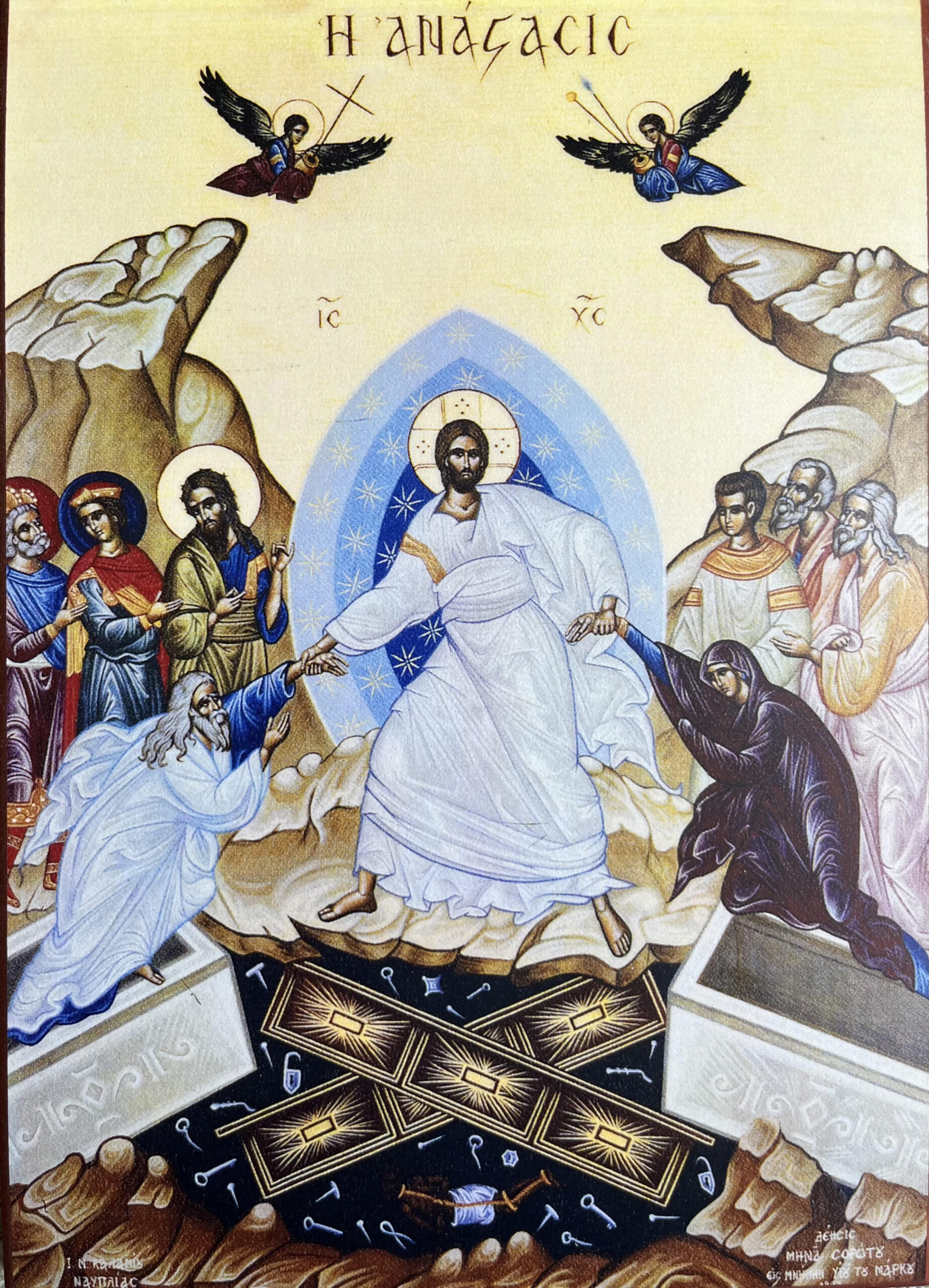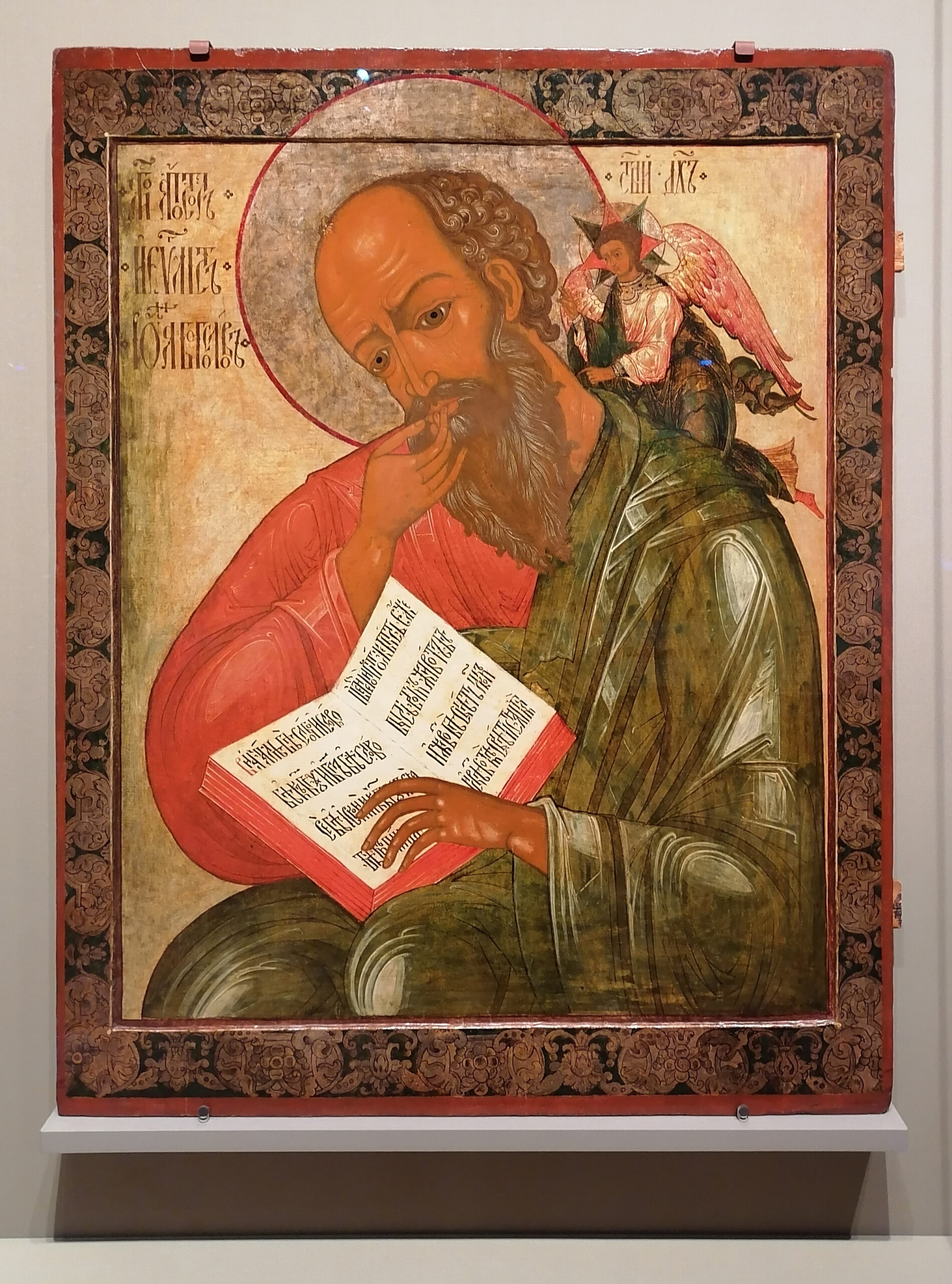Come, receive the Light, from the unwaning light, and glorify Christ, Who has risen from the dead.
(Resurrection Service, Pascha, Trans. by Fr. George Papadeas)
—
In the beginning was the Word, and the Word was with God, and the Word was God. He was in the beginning with God; all things were made through Him, and without Him was not anything made that was made. In Him was life, and the life was the light of men. The light shines in the darkness, and the darkness has not overcome it.
John 1:1-5
Christ is Risen!
Editor’s Note: During Holy Week, we took a break from “The Greatest Story Ever Sung” series to focus specifically on each day of Holy Week as it happened. We’ve been focusing on Holy Week for a couple of months now, but during the week, we discussed each specific day on that day. We will finish up this series with about 15 more reflections, these focusing on the Resurrection Service and the Agape Vespers and the notable hymns sung at each.
The service held late on Holy Saturday night and into early Sunday is called “The Anastasis” or the Resurrection Service. The service begins with a re-chanting of the “Canon” of the Good Friday evening Lamentations Service. Following the Canon, the dismissal prayers are offered, bringing to a close the Great and Holy Lent. In some places, the 7th Eothinon Doxastikon is chanted, which appears below at the end of this reflection. The lights in the church are darkened. In fact, all lights and candles are extinguished except for one candle, which burns on the altar. This light is called the “Akimiton Fos,” the Light that never sleeps.
The priest lights a candle from this solitary flame, and comes out from the Royal Doors singing a hymn: “Come, receive the Light, from the unwaning light, and glorify Christ, Who has risen from the dead.” In most churches, a few people are designated to receive the Light and pass it to the rest of the congregation. (In my ministry, I have always chosen three women from my parish to receive the Light and pass it to the congregation, because there were three women who went to the tomb of Christ and found it empty.)
This beautiful tradition of receiving the light has some practical meaning. First of all, the first thing created by God was light. Second, wherever there is light, there cannot be darkness. Darkness is the absence of light. So when people say that the church is completely dark, or the priest comes forth with the light in the completely darkened church, we can’t actually use the word “completely.” The church may be fairly dark, but it is not completely dark, because the one light on the altar burns, bringing light into a church that is otherwise dark. Similarly, the light of Christ brings light into the world. The world cannot be completely dark, and no situation is completely dark because Christ is in all. There is always some of His light even in the heaviest darkness.
The spreading of the light has both a good and bad meaning. How is that? In a sense, only a few people will step forward to receive the light. The rest will remain in their pews and the light will eventually spread to them. Someone might actually interpret this is “I don’t have to do much to get the light, just hang around and it will eventually get to me.” This may be true in the church on Pascha, but it is not really the way Christianity works. One must be more intentional to receive the Light of Christ, one must step forward and reach out for it.
On the other hand, for those fortunate few who are the first to receive the light, their job to spread it is represents the Great Commission, where the disciples were told to make disciples of all nations, in other words, to spread that light to all people. It also fulfills the words of Christ in Matthew 5:16, where He tells us to let our light shine before all people so that they can see our good works and glorify our Father who is in heaven. To see people sharing and spreading the light is a reminder to us that we are supposed to do the same.
We’ve already discussed the Creation of the world from Genesis 1:1-3, where God, in Trinity, created the world, and that the first thing He created was light. If Pascha is supposed to be a new beginning for the creation, then what more appropriate gesture can there be but to take everything back to the beginning, and have light emerge from darkness, and then for us to receive the light, affirming that we are created in God’s image and likeness.
It has been many years since I’ve been on the receiving end as far as the light on Pascha goes. One of the greatest privileges and joys that I have is to hold the light, high in a darkened church, and chant this beautiful hymn, “Come, receive the Light.” I have always sung this hymn through one time without lighting any candles, to let the one light shine high in the darkness of the church, and to gaze on that light, even though I am holding it, because it affirms for me that indeed the light of Christ shines in the darkness and no darkness is going to overtake it. In the moment I share the light with the three women who receive it, I always offer a prayer for them, and for that instant, as four people kneel around the light of Christ, it truly feels as though I am in heaven. It seems that time stops and even though the church is still dark, that one light seems to overwhelm the four of us with its warmth and brightness.
Life is hard, and at times we all get overwhelmed by a feeling of darkness. The receiving of the light on Pascha is an experiential reminder that wherever there is the least amount of light, there isn’t darkness. It is also a reminder to look around for those who might be in darkness and spread some light to them. The light of Christ can be found in not only the light of a candle, but in the light of a prayer, or encouragement, or empathy, or mercy, or a hug, or a shoulder to cry on, or in any other number of ways.
Behold, it is early and still dark. And why, O Mary, are you standing outside at the tomb, with much darkness covering your mind, such that you seek where Jesus has been laid? But see, how the Disciples, who ran together, understood the resurrection from the linen cloths and the napkin, and then remembered the scripture concerning this. With them and through them, we also have believed, and we extol You, Christ the Giver of Life. (7th Eothinon from the Resurrection Service, Trans. by Fr. Seraphim Dedes)
Receive the light, share the light, spread the light, be the light of Christ for others!

